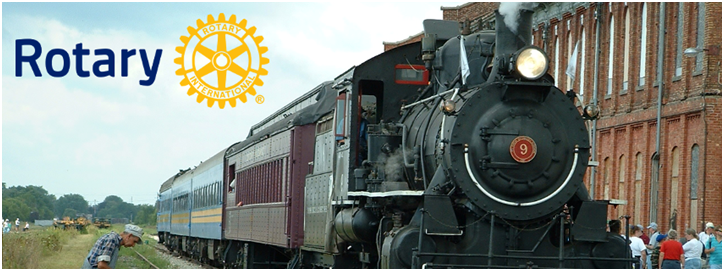RC St. Thomas Railway City Charter Night Event



CASO Station was remarkably large for a town the size of St Thomas (the community didn’t become a city until 1881). However, the building needed to be big enough to accommodate both the town’s passenger station (ground floor) and the corporate headquarters of CSR (upper floor).
The building’s grandeur was impressive. The 1882 publication Picturesque Canada reported that the station was “one of the finest in the Dominion, and reminds one of the large structures in Chicago and New York.”
Railroad development in southwestern Ontario began in the 1850s when the London and Port Stanley Railway (L&PS) was constructed. In 1870 St. Thomas’ town council, aware of the many benefits that railroads brought to the community, promised to award CSR a $25,000 ‘bonus’ if the railway company built its corporate headquarters within town limits.
The bonus worked. CSR purchased 125 hectares (309 acres) of land at the far eastern end of St. Thomas for its operation. The enormous site housed the station building, as well as an engine house, blacksmith shop, paint shop, round house, waste shop, freight depot and a large repair and maintenance building (which contained a machine shop, boiler shop and car erecting shop). Four hectares (nine acres) of the site were set aside for the station and its grounds, just to the east of the already existing L&PS.
The Shortest, Most Efficient Route
CSR not only built its corporate headquarters in St. Thomas, it also built a new line that stretched across southwestern Ontario. The eastern section of the new line (from St. Thomas to Amherstburg) opened in 1872; the western section (from St. Thomas to Fort Erie) was completed by early 1873.
CSR’s new route was the shortest, most efficient transportation route between Michigan and New York State. Plus, it had few bends, a good road-bed, heavy steel rails and few bridges. With connecting lines, the CSR route ultimately provided links between the cities of Chicago and New York City.
The Corporate History of Canada Southern Railway
In 1874, the Canada Southern Railway Company declared bankruptcy and two years later its railway line came under the control of American railroad magnate Cornelius Vanderbilt and his dynasty, owners of the New York Central Railway (NYC).
In 1883 the Canada Southern Railway (Canada Southern) was leased to Michigan Central Railroad (MCR), which the Vanderbilts also owned. Canada Southern was subleased back to NYC in 1930 and amalgamated into Penn Central, along with NYC and all its subsidiaries, in 1968. When Penn Central declared bankruptcy in 1976, Conrail bought the controlling interest in the company. Passenger traffic ended on January 31, 1979.
In 1983, the railway was purchased by both the Canadian Pacific Railway and Canadian National Railway. Freight traffic through the station ended in the 1980s and the station building was gradually shut down.
In 2005 the North America Railway Hall of Fame assumed ownership of the CASO Station.
